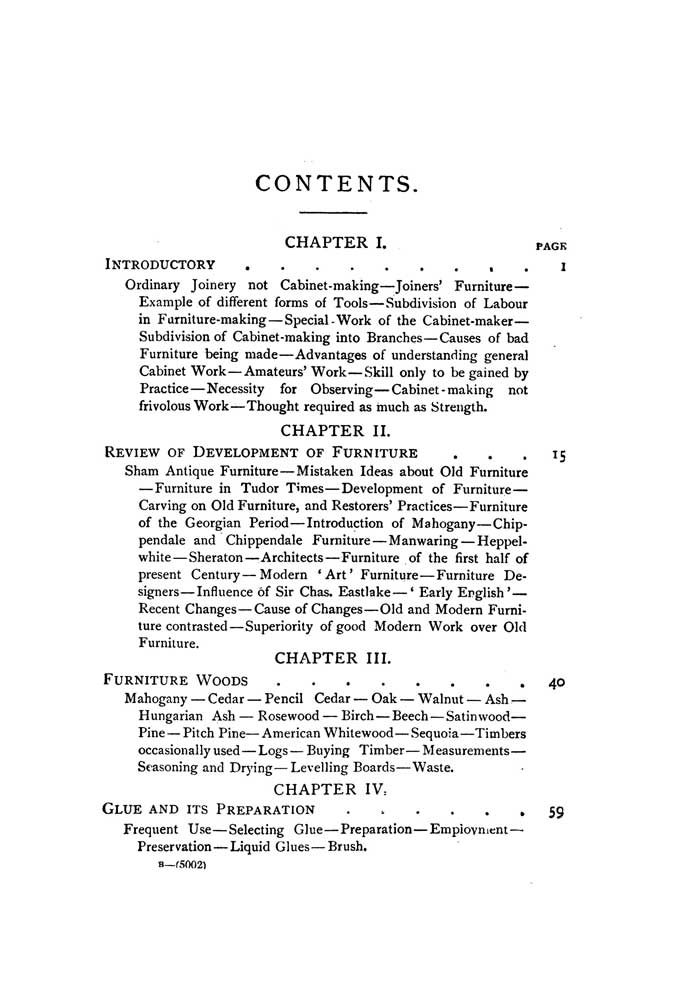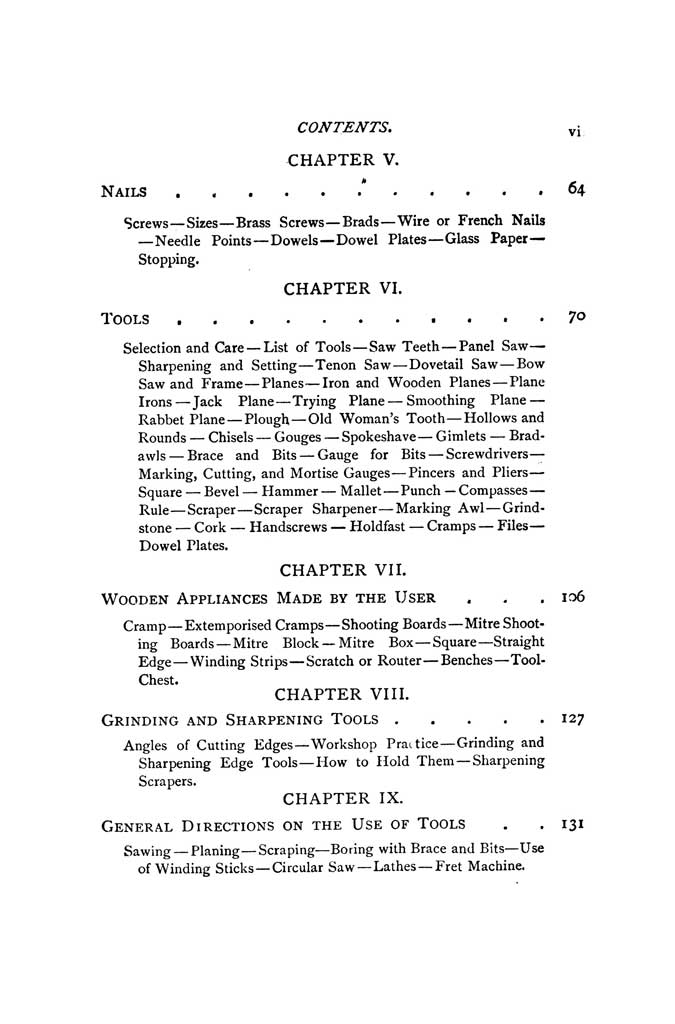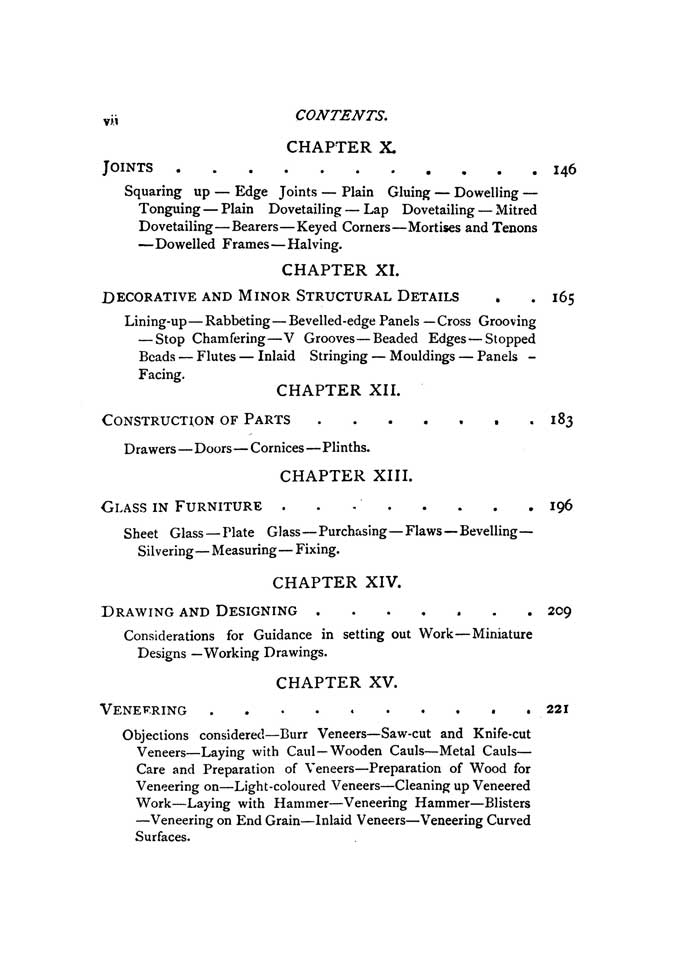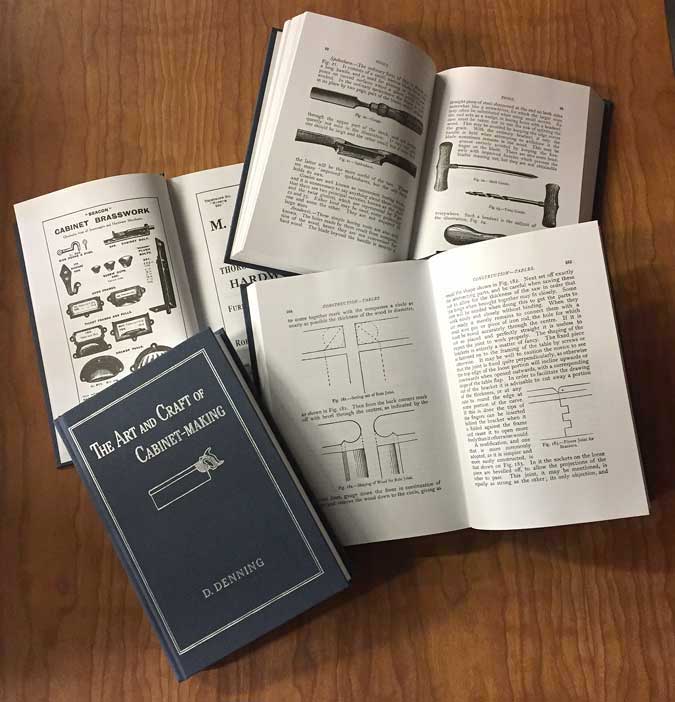We may receive a commission when you use our affiliate links. However, this does not impact our recommendations.
 This reprint of David Denning’s 1891 classic “The Art and Craft of Cabinet-Making,” with a foreword by Christopher Schwarz, is a must-read for hand-tool woodworkers, and for anyone who enjoys the history of the craft.
This reprint of David Denning’s 1891 classic “The Art and Craft of Cabinet-Making,” with a foreword by Christopher Schwarz, is a must-read for hand-tool woodworkers, and for anyone who enjoys the history of the craft.
I fought long and hard for this one, insisting that it be made to last, and that it be printed and produced entirely within the United States. I wanted the historic book to look and feel as much like the original as possible: hardbound with a cloth, foil-stamped cover; a Smythe-sewn binding (not only does that last; it stays open on your bench without breaking the spine); cloth headbands; and nice, acid-free paper (that, by the by, is an improvement over the original). Heck – I even scanned every one of the 300+ pages myself, including the period advertisements in the front and back (those are fun!), then we fussed over the scans to clean them up a bit in any places where the type was fuzzy from ink missing in the original. It was altogether a labor of love.
 It took a lot of discussion, cajoling and ibuprofen, but it is done, and now available exclusively at ShopWoodworking.com. And we are doing only this one printing – even if they sell out in a day (though we did print enough copies that I’d be gobsmacked if that happened).
It took a lot of discussion, cajoling and ibuprofen, but it is done, and now available exclusively at ShopWoodworking.com. And we are doing only this one printing – even if they sell out in a day (though we did print enough copies that I’d be gobsmacked if that happened).
The book looks and feels great, and will last more than a lifetime – but it’s what’s on the inside that, of course, really matters. Here’s the table of contents:
As you can see, it’s chock-full of late 19th-century woodworking instruction, which remains relevant today. Plus, Denning is, in a late Victorian manner, pretty funny (if perhaps just a trifle opinionated):
“By way of preface it seems unnecessary to say much beyond stating that the intention is to supply amateurs and young professional cabinet-makers with a reliable guide to the construction of cabinet furniture. No attempt has been made to teach the thoroughly experiences artisan, and no new fads are advocated either in style or processes. The ordinary reliable methods of the workshop and nothing more are explained, and on this account the book will, no doubt, be of greater use to those for whom it is intended than if new theories of ‘construction as it ought to be,’ according to many of those who presume to teach the skilled mechanic, has been advocated. it will, no doubt, have been observed by those who are interested in the subject that cabinet-making as distinguished from joinery has received scant attention, as with scarcely an exception the books professedly treating the former only, have included much that pertains to the latter. Those who are practically acquainted with the manufacture of furniture will understand the reasons, which, however, it is unnecessary to explain here.
“Those who may wish to have a further acquaintance with the construction of furniture, other than cabinet work, may be interested to know that is is in contemplation to treat of upholstery, fret-sawing, marquetry cutting, French and other polishing, &c., in other volumes.
“It merely remains to explain that the chapter on brass-work has been, if I may so call it, edited by my friend, Mr. W.H. Bridge, who is well known in Birmingham and in furniture trade circles as an authority on the subject and to thank him, as well as Mr. J. Thompson, for the kindly interest they, among others, have taken in this book, which has had the advantage of their criticism while in progress.
Thanks are also due to Messrs. Wm. Marples & Sons, Sheffield, for having kindly furnished illustrations of tools, which it will be noticed show their familiar trade mare, the shamrock. The Hibernia brand is sufficient guarantee as to the quality of any tool bearing it.” — D. Denning
One of the most notable things about “The Art and Craft of Cabinet-Making,” however, is that it is infamous for having promulgated some of the woodworking history myths that are today still bandied about. As Christopher writes in his introduction:
“Denning begins by cautioning the reader that there is a good deal of misleading and inaccurate information out there about furniture, how it was made, what makes a good joint and the different styles one might encounter.
“That’s great advice because he’s correct. He then immediately goes on to repeat a great number of misleading and inaccurate tales about woodworking and furniture that were common in the late 19th century, such as the tale of how mahogany was introduced to Great Britain….
“Despite the above, I highly recommend “The Art and Craft of Cabinet-Making” to woodworkers who are interested in history and woodworking for several reasons.
“First, Denning is a fantastic writer, and this book is (by Victorian standards) quite hilarious. I laughed out loud when Denning criticized the crap furniture of the day: “Made under trade conditions (in London), much of it is utterly bad; so bad, that were the material any better than it is, one would be inclined to look on it as a waste of wood….”
On a personal note: I was so sure that you will love this book that I pretty much bet my cats on it. My boss wasn’t convinced a vintage reprint with such high production value would “speak” to enough of our community to be worth doing, and I was urged to use cheaper paper and a cheaper binding, and to print overseas. I refused; a great book is worth doing well. I hope you’ll prove me right.
Here are some supplies and tools we find essential in our everyday work around the shop. We may receive a commission from sales referred by our links; however, we have carefully selected these products for their usefulness and quality.














Ordered.
Tell your bosses I would rather have hunted for a mediocre original copy than purchase a crappy reprint. Quality matters. Local matters.
Ordered my copy. I thought the ploy about betting your cats was a little underhanded. Well, I’ve done my part to save one of your cats – you just have to decide which one to save.
I came, I saw, I clicked Buy…